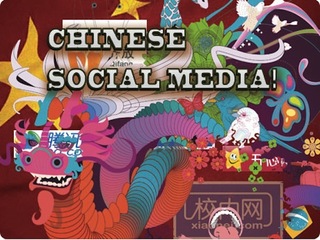
China has become a major consumer of online content — now with well over 485 million Internet users (23% of the people scanning the Web) — and now it seems that the country that has been slow to integrate social media, has made progress.
A study released Friday by PR Newswire, shows that Chinese companies have adopted more elements of social media, such as microblogs, but they have a ways to go before they catch up to the reliance that U.S. companies have on social networking.
A significant 87% of the more than 1,200 respondents said that they used social media on a daily basis, but the frequency and type differed greatly across the sample.
The companies that were least likely to use or update social media, understandably, were in the energy, chemical or environmental industries with greater than 500 employees.
Almost all of those in the tourism industry and aviation sector used some social media every day.
The most widely adopted and frequently used form of social media was the microblog — with 43.4% of companies using it frequently and less that 5% stating that they never use the product or would never consider microblogging.
“For companies, a microblog is not only a means for marketing, but also a communications channel between itself and the outside world,” Xu Zhiming, Founder and CEO of kuaishubao.com, said in a statement. “Opinions expressed on microblogs can help a business get insight into what consumers want, their experience with the product, the most up-to-date information on the level of market demand as well as market trends and the signs of an impending PR crisis.
Zhiming said that sales are not that important in the microblog format and that 40% of th e traffic to their official website originates from the microblog, while traffic from search and social channels such as Baidu, Google, Douban and kaixin001.com collectively contributed 30%.
e traffic to their official website originates from the microblog, while traffic from search and social channels such as Baidu, Google, Douban and kaixin001.com collectively contributed 30%.
Mobile applications also showed high adoption — with 30.2% using them frequently and 83% using them in some capacity.
Social networking sites, as a whole, had a fairly low adoption compared to brands in the U.S. — 15.4% of Chinese respondents stated that they have never used any social networking websites.
Only 24% of the respondents had set up formal pages for their company on Chinese platforms such as Kaixin001 and Renren.
There has been constant debate about how more U.S. social networks like Twitter could eventually debut in China — but it would require comprimise on at least one of the fronts of censorship.
But across the board, Chinese companies are putting more money into social networking solutions — ranging from 17-31% more budgetary support.
While using social media and other Web-based platforms is a bit risky and challenging for the censored ecosystem of China’s Internet, there is a growing demand for more business-to-consumer avenues of communication online.
More than 90% of the companies responded that they have a demand for third-party services to aid in the distribution and management of their online brand. This provides a critical opportunity for third parties to invest in Chinese outreach and create tailored solutions for companies that want to keep up with the online pace.
Image Source — Chinatraveltrends.com















